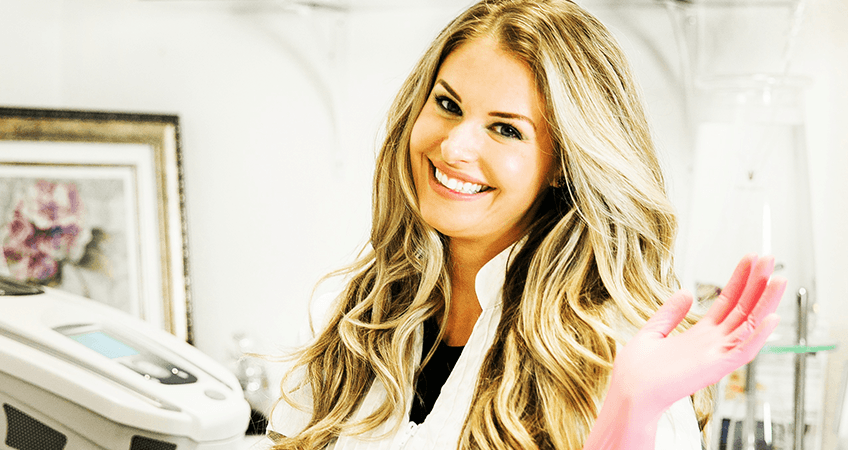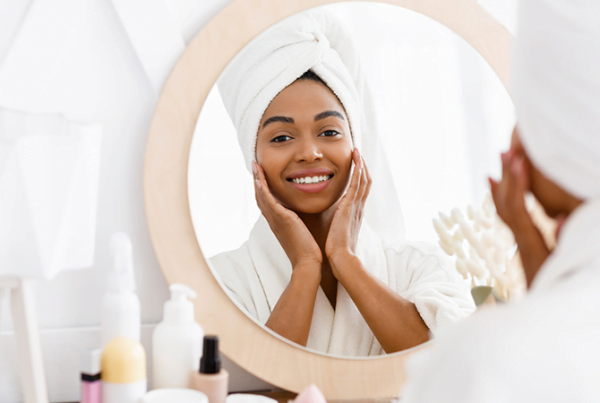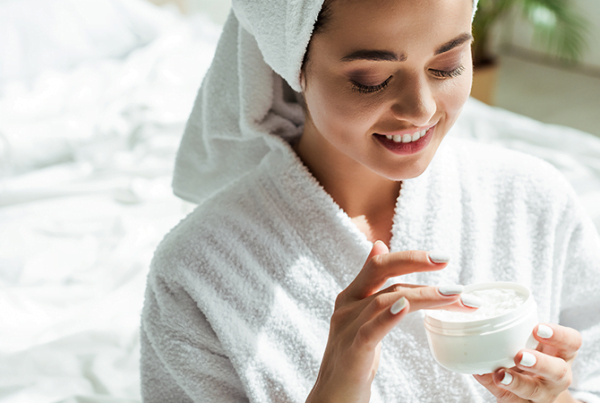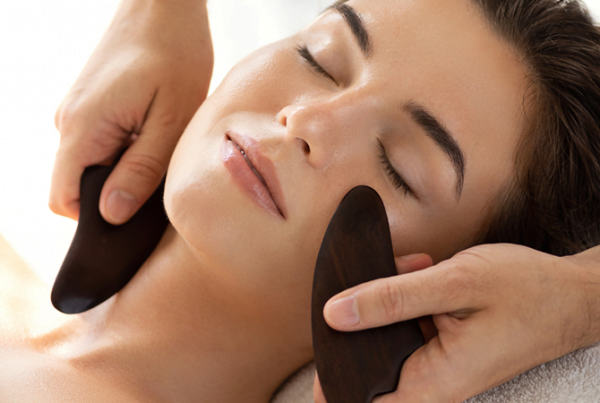
Everyone loves and desires a radiant complexion. Chemical exfoliation can help you attain a beautiful complexion. The word chemical, which refers to using acids to slough off dead skin cells, may sound scary. But don’t let those words fool you. It’s not as intense as it sounds.
Once you understand how they work and which ones are good for your skin type, you won’t experience any irritation and you will begin to see several benefits.
Using chemical exfoliators improve your skin’s color, tone, and texture. If you have any discoloration because of sun damage, chemical exfoliation helps to improve your color.
Your skin naturally sheds dead skin cells. But this process can be slowed down because of sun damage and dry or oily skin which leaves your skin looking dull. You may also experience clogged pores and an uneven skin tone.
Using an exfoliant will help restore your skin’s natural process. Remove the dead skin cells gently and you will notice that your skin looks and feels younger.

What is chemical exfoliation?
There are two types of exfoliators, physical and chemical.
Physical ones use tiny granules to remove dead skin cells by gently rubbing your skin. Scrubs only work on the very surface of your skin. They don’t reach down to the multiple layers of built up dead skin.
Chemical exfoliants use mild acids or enzymes to remove dead skin cells. Chemical exfoliation is milder for your skin because there is no scrubbing. They also go deeper within your skin than scrubs do produce the desired result with fewer problems.
Common chemical exfoliants include:
- Glycolic acid
- Salicylic acid
- Lactic acid
- Papain (an enzyme derived from papaya)
- Bromelain (an enzyme derived from pineapple)
If you are prone to acne, dry skin, eczema or other skin irritations, chemical exfoliants are more beneficial because they are milder. They soften the skin without turning you red or creating wrinkles.
Why you should be doing a chemical exfoliation
Chemical exfoliation can give you glowing, brighter and healthier-looking skin.
While physical exfoliators can be a bit rough on your skin, chemical ones are milder and go deeper producing a more uniform peel. You leave them on your skin and they work more effectively than physical scrubs.
The two categories of chemical exfoliants are AHAs and BHAs.
Lactic or glycolic acid are in AHAs. They are good if you have dry or sun-damaged skin. Glycolic acid dissolves dead skin cells from the surface of your skin.
BHAs like salicylic acid have anti-inflammatory and antibacterial properties. If you get blackheads or other breakouts, BHAs will work great for you. They also can penetrate blocked pores preventing acne.
How to pick the right chemical exfoliant
To help you pick the right chemical exfoliant, here are a few more differences between AHAs and BHAs.
AHAs exfoliate the surface of the skin. Because they are water-soluble, AHAs help with hyper-pigmentation and moisturizing the skin.
BHAs exfoliate the surface of your skin and inside the pores. They are oil-soluble and help with healing acne or breakouts. BHAs also reduce sebum and oil production. BHAs can also help with aging skin. It gives you a smoother complexion because when the dead skin cells are removed you have new fresh skin cells on the surface of your face.
If you can’t decide whether you want to try AHA or BHA you can find several products that contain both. This way you’re treating breakouts and hyper-pigmentation.
Try this high potency moisturizer with concentrated glycolic acid to help lessen wrinkles. This will help increase skin smoothness and firmness and promotes a youthful glow.
If you are new to using chemical exfoliants, start by using between 2% to 5% concentration of the acid type you choose. Work your way up from there depending on what your skin needs.
How do you use a chemical exfoliant?
Chemical exfoliation should be done after your cleansing routine. Apply it with your fingers if it is a lotion or gel. But avoid putting it on your eyelids or right underneath your eyes close to the bottom lashes.
You can apply moisturizer or sunscreen right over the exfoliator immediately afterward.
Test different strengths of chemical exfoliant and test how often you can apply it. If you have sensitive skin start with once a week and work up to 3 times a week. Some people can use it twice a day, some once a day and others only a few times a week. Even though exfoliating is essential, if you do it too often it can cause dryness or other skin irritations.
After you apply the chemical exfoliator, use a moisturizer. For nighttime use a heavier cream or oil and in the daytime use a moisturizer and don’t forget the sunscreen. Acids can increase sun sensitivity. Keep your skin protected even on cloudy days.
You can apply AHAs and BHAs to the neck down and see great results.
Disclaimer
Chemical exfoliation may not be for everyone. Start by testing your product to see how sensitive your skin is. It may cause too much redness.
Before starting to use exfoliators consider your skin type.
If you have super sensitive skin, you may want to just use a washcloth with a mild chemical exfoliator. A physical exfoliation might be too irritating.
If you have a darker skin type you may have to avoid strong chemical or physical exfoliation. It may cause dark spots on the skin.
If you want healthy-looking skin, try chemical exfoliation. They are quick and easy to use and don’t require any scrubbing. Because they work more deeply than physical exfoliating, you will have longer-lasting results. Chemical exfoliating also reduces signs of aging and gives you a healthy glow.
Start off testing the chemical exfoliant you choose and once you’ve found one that works great with your skin type, start to increase how often you use it. Also, slowly increase the strength you use. Keep track of the benefits you see until you find the perfect way to add chemical exfoliation to your skincare routine. It won’t be long before you start to see the benefits of exfoliating. Your skin will start to glow. You will notice a smoother texture and begin to see any pigmentation fading.




